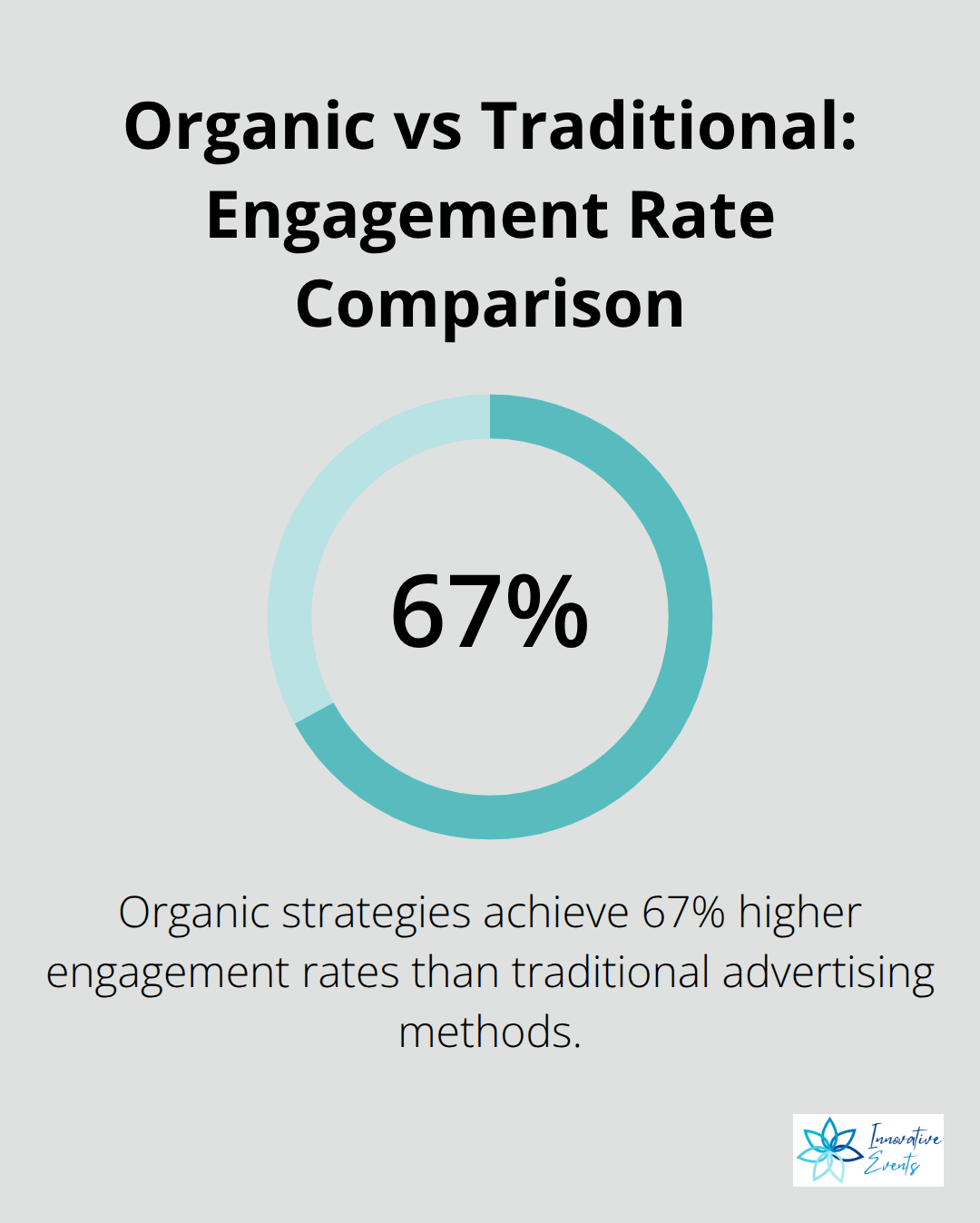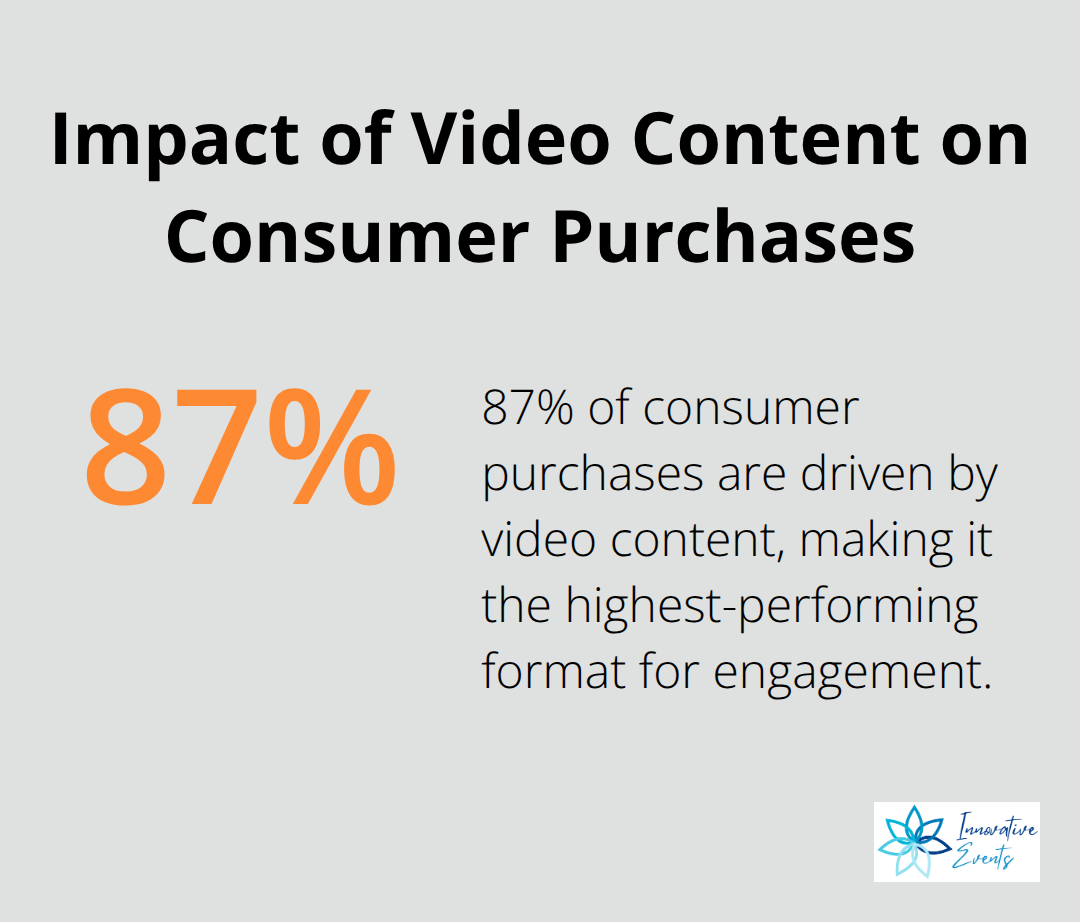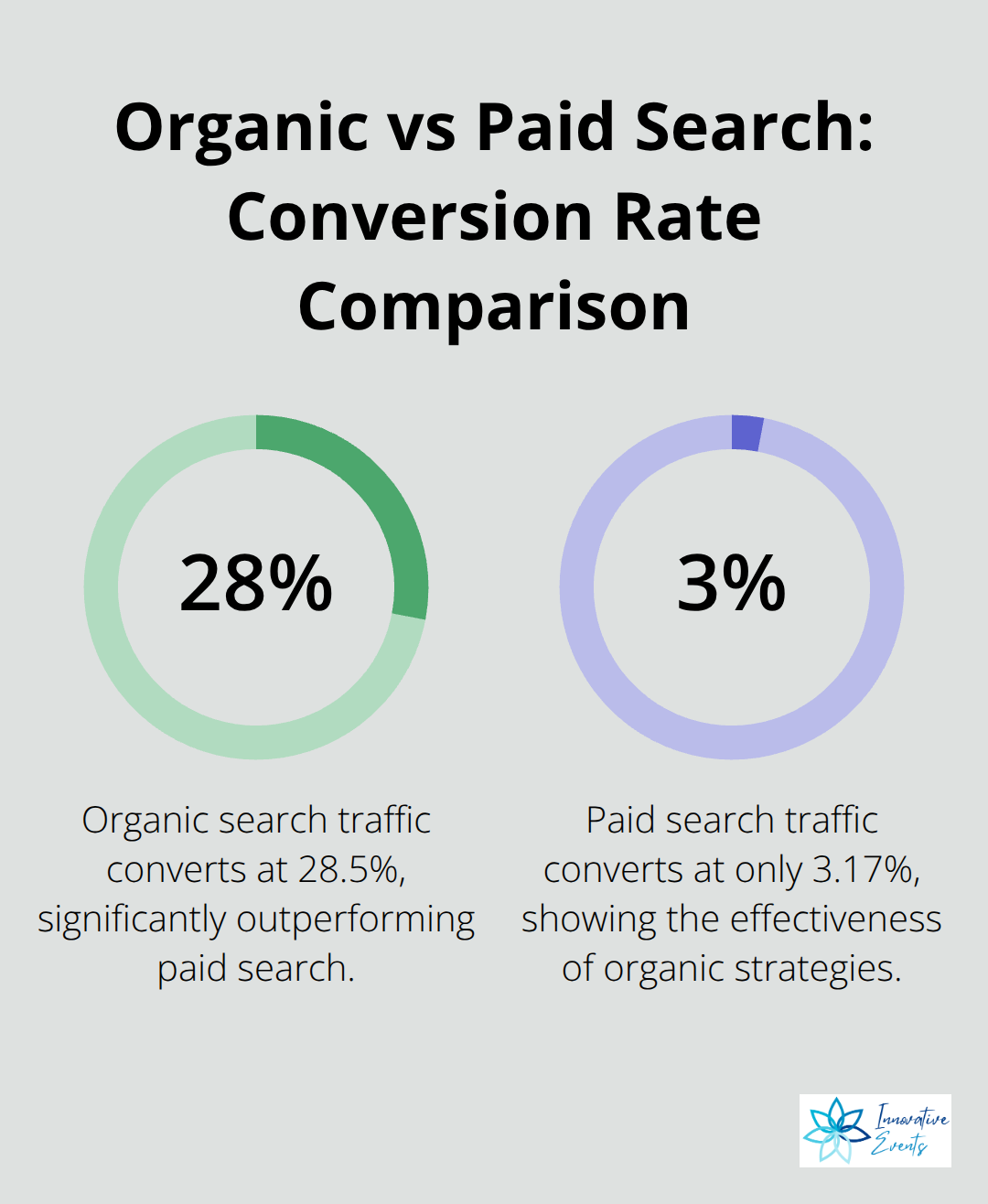Organic content marketing builds genuine connections with audiences through valuable, non-promotional content. Unlike paid advertising, this approach focuses on earning attention rather than buying it.
We at Innovative Events have seen brands achieve 67% higher engagement rates through organic strategies compared to traditional advertising methods. The key lies in creating content that naturally attracts and retains your target audience.

What Makes Organic Content Marketing Different
Organic content marketing operates on a fundamentally different principle than traditional advertising: it earns attention through value rather than purchases visibility. This approach centers on content that audiences actively seek, share, and engage with because it solves problems or provides insights. Research from HubSpot shows that 70% of marketers actively invest in content marketing, with increased brand awareness through these organic strategies. The core principle involves authority and trust through consistent, helpful content that positions your brand as a knowledgeable resource rather than a sales-focused entity.
The Economics of Organic vs Paid Content
The financial impact of organic and paid strategies reveals stark differences in both cost and performance. Content marketing generates leads more cost-effectively than outbound marketing, with lead generation through content marketing averaging $92 per lead according to HubSpot’s Demand Generation Report. Organic search traffic converts at higher rates compared to paid search traffic, which demonstrates superior audience quality. Paid ads stop when you stop payment, while a well-optimized blog post can drive traffic for months or years after publication. This compound effect makes organic content more cost-effective over time and builds sustainable traffic streams that don’t require ongoing ad spend.
Authority Through Consistent Value Delivery
Organic content marketing creates brand equity through consistent value delivery and authentic audience relationships. Companies that use strategic content marketing see more leads than those that rely solely on traditional methods. The approach builds credibility through expertise demonstration rather than promotional messages, which establishes brands as trusted authorities in their fields. This trust translates into customer loyalty, with organic content that fosters deeper connections than interruptive ads. Each piece contributes to a library of searchable, shareable resources that continue to attract new audiences while nurturing existing relationships.
Content Types That Drive Natural Engagement
Different content formats serve specific purposes in organic marketing strategies. Blog posts remain the foundation for many B2C marketers, while video content shows exceptional performance with consumers making purchases after watching brand videos. Short-form and long-form articles each rank as top performers for marketers, and podcast listening has grown significantly in recent years. The key lies in matching content types to audience preferences and platform algorithms to maximize organic reach and engagement across multiple touchpoints.
How Do You Build Content That Ranks and Engages
Research-driven content strategy starts with understanding search intent and audience behavior patterns. Google Keyword Planner and SEMrush reveal monthly search volumes and competition levels, while tools like AnswerThePublic show actual questions people ask about your topics. Content that addresses specific pain points performs better than generic industry overviews. Analyze competitor content gaps with Ahrefs to identify topics they miss, then create comprehensive resources that fill those voids. Social listening tools like Sprout Social track conversations around your industry keywords and reveal trending topics plus customer frustrations that make excellent content angles.
Match Content Formats to Platform Algorithms
Video content drives 87% of consumer purchases according to recent studies, which makes it the highest-performing format for engagement. Short-form videos under 60 seconds work best on Instagram and TikTok, while YouTube favors longer educational content between 7-15 minutes. Blog posts need 1,500-2,500 words to rank well in Google search results, with clear subheadings and internal links. Infographics get shared 30 times more than text-only posts on social media platforms. Podcast content reaches audiences during commutes and workouts when other formats fail (with 46% of weekly listeners making purchases after hearing brand mentions).

Optimize for Search Without Sacrificing Readability
Primary keywords belong in titles, first paragraphs, and H2 subheadings, but keyword stuffing kills rankings and readability. Use semantic keywords and related phrases naturally throughout content to signal topic relevance to search engines. Meta descriptions under 160 characters improve click-through rates from search results pages. Internal links to related content keep visitors engaged longer and help search engines understand site structure. Page loading speed affects both user experience and search rankings, with faster websites more likely to rank higher in search engine results.
Create Content That Answers Real Questions
Successful organic content solves problems that your audience actively searches for online. Question-based content performs exceptionally well because it matches natural search patterns and voice queries. FAQ sections, how-to guides, and troubleshooting articles attract high-intent traffic that converts better than general awareness content. Monitor customer service inquiries and sales team feedback to identify common questions that deserve dedicated content pieces. This approach builds authority while capturing traffic from specific, actionable search queries that competitors often overlook, especially when creating content that generates leads through strategic audience targeting.
How Do You Track Real Content Performance
Organic content success demands metrics that connect directly to business outcomes rather than vanity numbers. Monthly organic traffic growth rates above 15% indicate healthy content performance, while average session durations over 2 minutes show genuine engagement. Google Analytics 4 reveals which content pieces drive conversions, with organic search traffic converting at 28.5% compared to paid search at 3.17% according to BrightEdge research. Track branded search volume increases through Google Search Console, as rising brand searches signal growing awareness from organic content efforts.

Revenue Attribution Through Content Analytics
Google Analytics attribution models show which content pieces influence customer journeys from first touch to final purchase. Set up goal tracking for email signups, demo requests, and sales to measure content impact on revenue generation. HubSpot data reveals that companies with strategic content marketing generate 67% more leads monthly than those without content strategies. Track assisted conversions to see how blog posts and resources influence customers who convert through other channels. Content that drives phone calls, form submissions, and direct sales inquiries provides clearer ROI metrics than engagement-only measurements.
Performance Monitoring Tools That Matter
SEMrush and Ahrefs track keyword rankings, backlink growth, and competitor content gaps that reveal optimization opportunities. Google Search Console shows click-through rates from search results (with rates above 5% indicating strong title optimization). Social media analytics from Sprout Social measure share rates and comment engagement that amplify organic reach beyond owned channels. Monitor how your audience interacts with your content closely to identify which posts generate the most engagement and when your followers are most active. Heat mapping tools like Hotjar reveal how users interact with content pages, showing scroll depth and click patterns that inform content structure improvements.
Weekly Analysis Beats Daily Obsession
Monitor performance tools weekly rather than daily to identify meaningful trends without distraction from normal fluctuations. Daily metrics create noise that obscures real patterns, while weekly reviews reveal actionable insights about content performance. Focus on month-over-month comparisons to understand true growth trajectories (quarterly reviews work best for strategic decisions). This approach prevents reactive changes based on temporary dips and helps maintain consistent content quality standards.
Final Thoughts
Organic content marketing transforms how brands connect with audiences through authentic value delivery rather than promotional messages. The data speaks clearly: companies that use strategic content approaches generate 67% more leads while they achieve conversion rates of 28.5% from organic traffic compared to just 3.17% from paid channels. Success requires consistent execution across three core areas that drive real business results.
Brands must develop research-driven content that answers real customer questions and addresses specific pain points. They need to optimize for search engines without sacrificing readability through strategic keyword placement and semantic content structure. Companies should track meaningful metrics that connect content performance to actual business outcomes rather than vanity engagement numbers (weekly analysis beats daily obsession for actionable insights).
The future belongs to brands that build authority through helpful resources and genuine expertise demonstration. Video content continues to drive purchase decisions for 87% of consumers, while podcast audiences grow significantly each year. We at Innovative Events help brands craft compelling messages and create content that builds loyal communities through strategic organic content marketing approaches.

